Fort Henry
Introduction
Text-to-speech Audio
Images
Historians believe that this area, now an empty lot, was once home to Fort Henry.
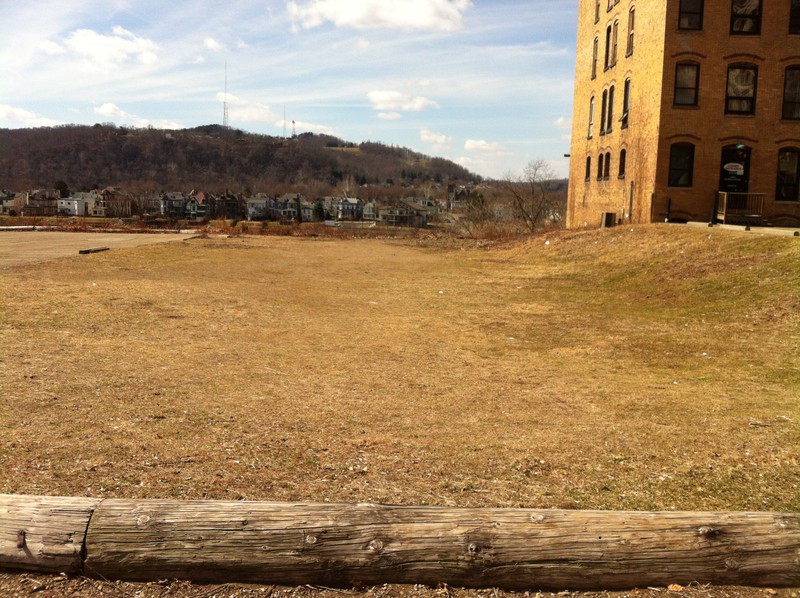
A sketch of Fort Henry
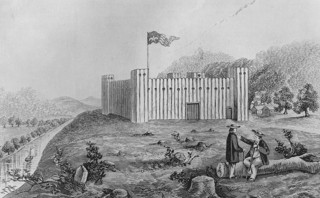
Depiction of Betty Zane
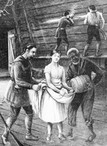
WV Historical Marker
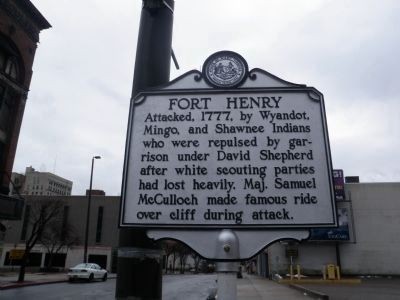
WV Historical Marker--opposite side
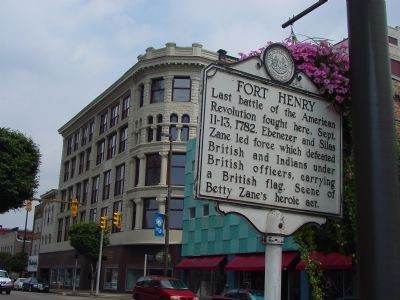
Backstory and Context
Text-to-speech Audio
The Revolutionary War in the West looked very different from the way it did in the East. In the East, the war was fought in occupied cities who struggled to keep supplies, while the West was fought between the settlers and the Native Americans who were trying to prevent any movement beyond what had already been settled. The French and the British were trying to keep control of land and goods for economic reasons, while the Native Americans would raid the settlers to ensure their rightful territories stayed in their possession.
Lord Dunmore's War began in 1774, after the land of the Shawnee was slowly being taken away from them. The massacre of the Logan family, a Mingo group living and trading with settlers at the mouth of Yellow Creek near Steubenville, Ohio, was the tipping point for the Shawnee. The issues at stake in the conflict on the frontier from 1774 to 1795 were ones of land ownership and control of trade routes. Lord Dunmore's War worried the settlers, and they built Fort Henry for protection.
The first attack on Fort Henry started on September 1st, 1777, and lasted for three days and three nights. Fort Henry was defended by 60 men, and almost half of them were lured out of the fort and killed by the 200 Wyandots and Mingos. The Native Americans burned nearby cabins and buildings, and eventually retreated across the Ohio.
The most famous attack on Fort Henry occurred on September 10th, 1782. Once again, 200 Wyandots and Mingos attacked the fort, but this time they were accompanied by British troops. Supplies quickly dwindled and the settlers were losing hope. Betty Zane, the sister of Fort Henry founder, Ebenezer Zane, volunteered to leave the fort to retrieve more supplies. Betty volunteered herself because she believed the Native Americans would not shoot her because she was a woman, and she was right. On her way to retreive supplies, the Native Americans held their fire. However, when Betty was returned to the fort, and the Native Americans saw that she had gunpowder stuffed in her dress, they were not so kind. Betty made it back to Fort Henry unharmed and with gunpowder; her heroism is known for the survival of Fort Henry during this attack.
Following this courageous feat, Betty Zane came to be called the Heroine of Fort Henry. She went on to marry twice and give birth to nine children. She died on August 23, 1823 and is buried in Martins Ferry, Ohio.
There are no photographs or sketches of Fort Henry, and it is no longer standing. No one knows exactly what the fort may have looked like, and there have been historical disputes on it's appearance and even location. Several forts that were also built in the same time frame, have been excavated and all of them have been made of upright logs, sometimes with brush, planks, or other objects filling the spaces to stop bullets. All of the forts had lean-to sheds, log blockhouses, and stores and residences for the officers. With first hand accounts, it is believed that the fort sat on a one-half to three-quarter acre lot and sitting on a bluff. The fort itself would have been around 85' by 50' and since the fort was only used in times of attacks, it could have easily supported the early settlers.
The fort was very active for about nine years, seeing four notable attacks: February 1777, September 1777, September 1781, and September 1782. After the last attack, the fort was abandoned. Some sections of it still remained standing until 1808.
Sources
1. Richard S. Klein and Alan H. Cooper. “Fort Henry Story.” Fort Henry Bicentennial Committee. 1982. Web. Accessed October 24, 2016. https://www.ohiocountylibrary.org/wheeling-history/the-fort-henry-story-by-klein-and-cooper/3699
2. Philip Sturm. "Fort Henry." September 10, 2012. e-WV: West Virginia Encyclopedia. Web. Accessed October 24, 2016. https://www.wvencyclopedia.org/articles/2045
3. Mary Rodd Furbee. "Betty Zane." August 31, 2017. e-WV: West Virginia Encyclopedia. Web. Accessed October 24, 2016. https://www.wvencyclopedia.org/articles/1396
4. A.B. Brooks. "Story of Fort Henry." West Virginia History. Vol. 1, No. 2 (January 1940): 110-118. Digitized. http://www.wvculture.org/history/journal_wvh/wvh1-2.html
"Fort Henry." The Historical Marker Database. Accessed October 6, 2020. https://www.hmdb.org/m.asp?m=71075.
"Fort Henry." The Historical Marker Database. Accessed October 6, 2020. https://www.hmdb.org/m.asp?m=71075.
